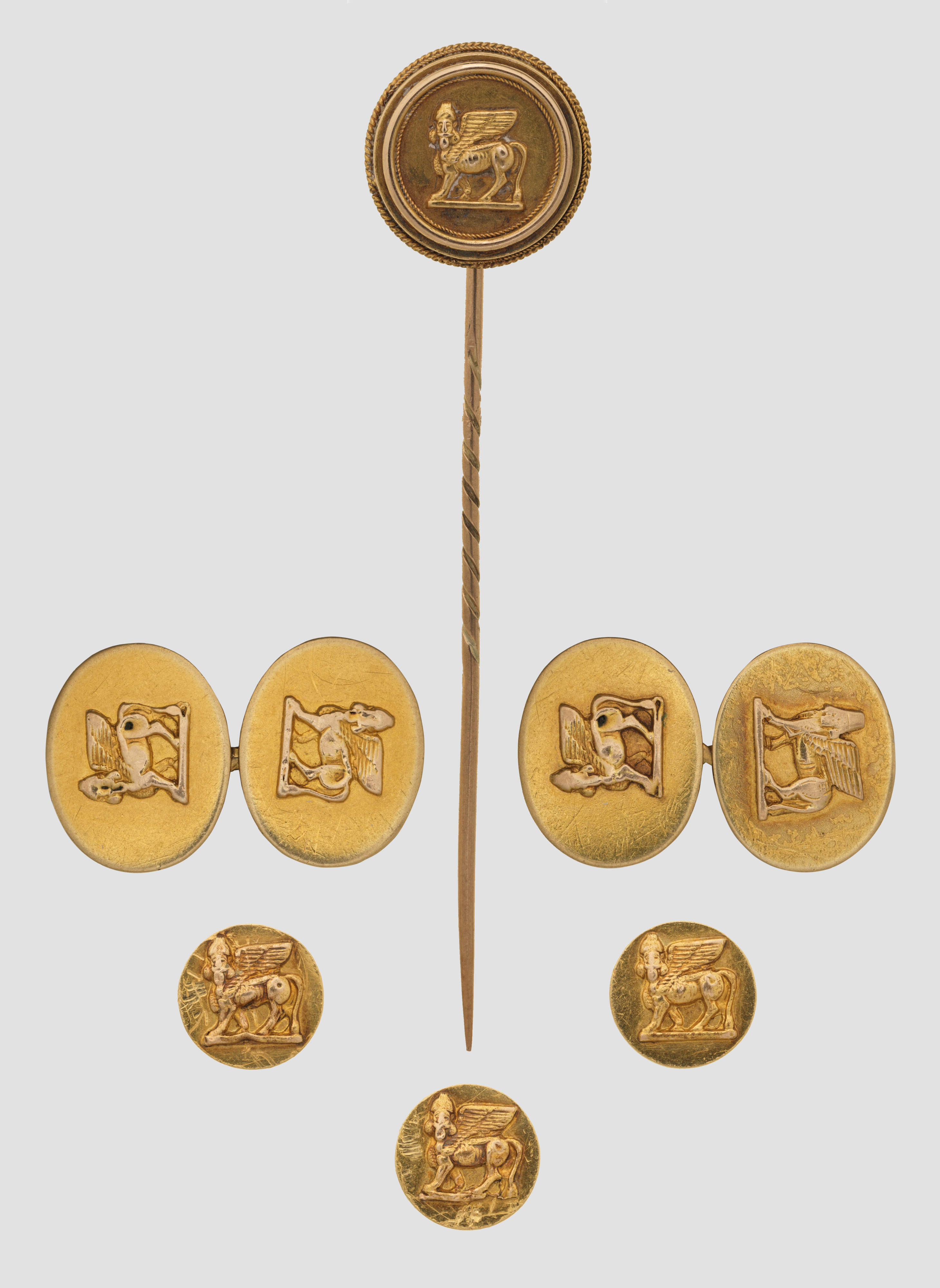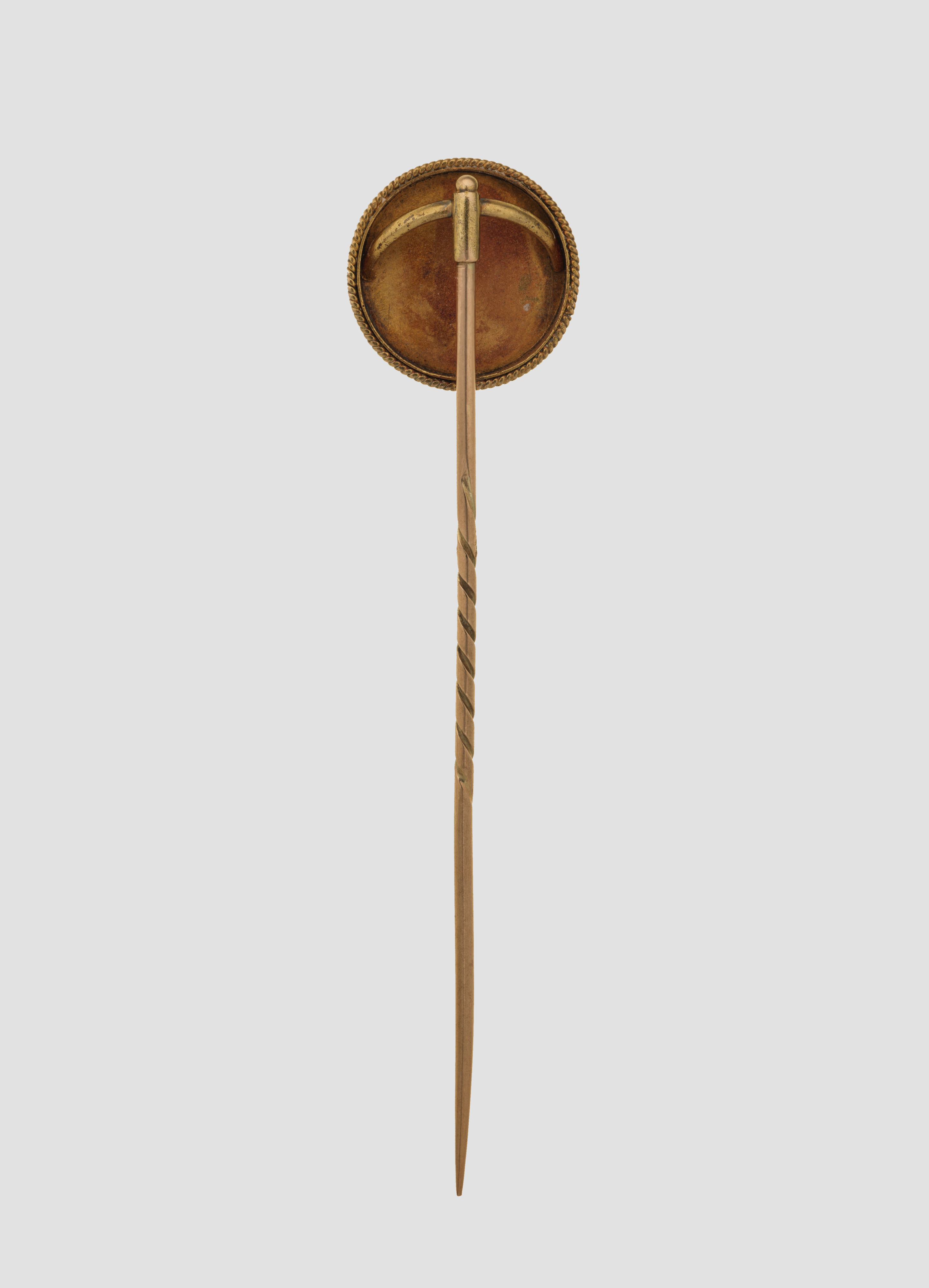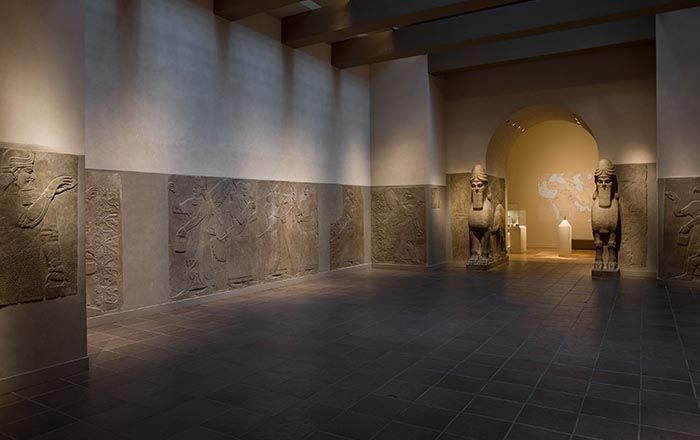Stick pin with Assyrian human-headed winged bull
Not on view
Following the excavation of Assyrian palaces in the mid-nineteenth century, ancient Mesopotamian imagery began to be used in European decorative arts, including jewelry and ceramics. Publicity in the form of news coverage and popular books around the excavations, removal of many sculptures from sites in northern Iraq to England and France, and public spectacles such as the reconstructed ‘Nineveh Court’ in the Crystal Palace at Sydenham, London, fostered a fascination with Assyria and Assyrian art among the Victorian public.
This pin forms part of a set with a pair of cufflinks (2023.700a, b) and three dress studs (2023.701, .702a, b). All are decorated with human-headed winged bulls, based on the colossal guardian sculptures found flanking important gateways in the palaces that became the modern icons of the Assyrian excavations and were the motif most commonly used in Assyrian revival jewelry and decorative arts. Although the winged bull designs on all match closely, the pieces do bear different marks. One stud and both cufflinks bear the maker’s mark "J & A", the other two studs the maker’s mark "D & M"; the stick pin does not bear a maker’s mark.
This image cannot be enlarged, viewed at full screen, or downloaded.
This artwork is meant to be viewed from right to left. Scroll left to view more.




